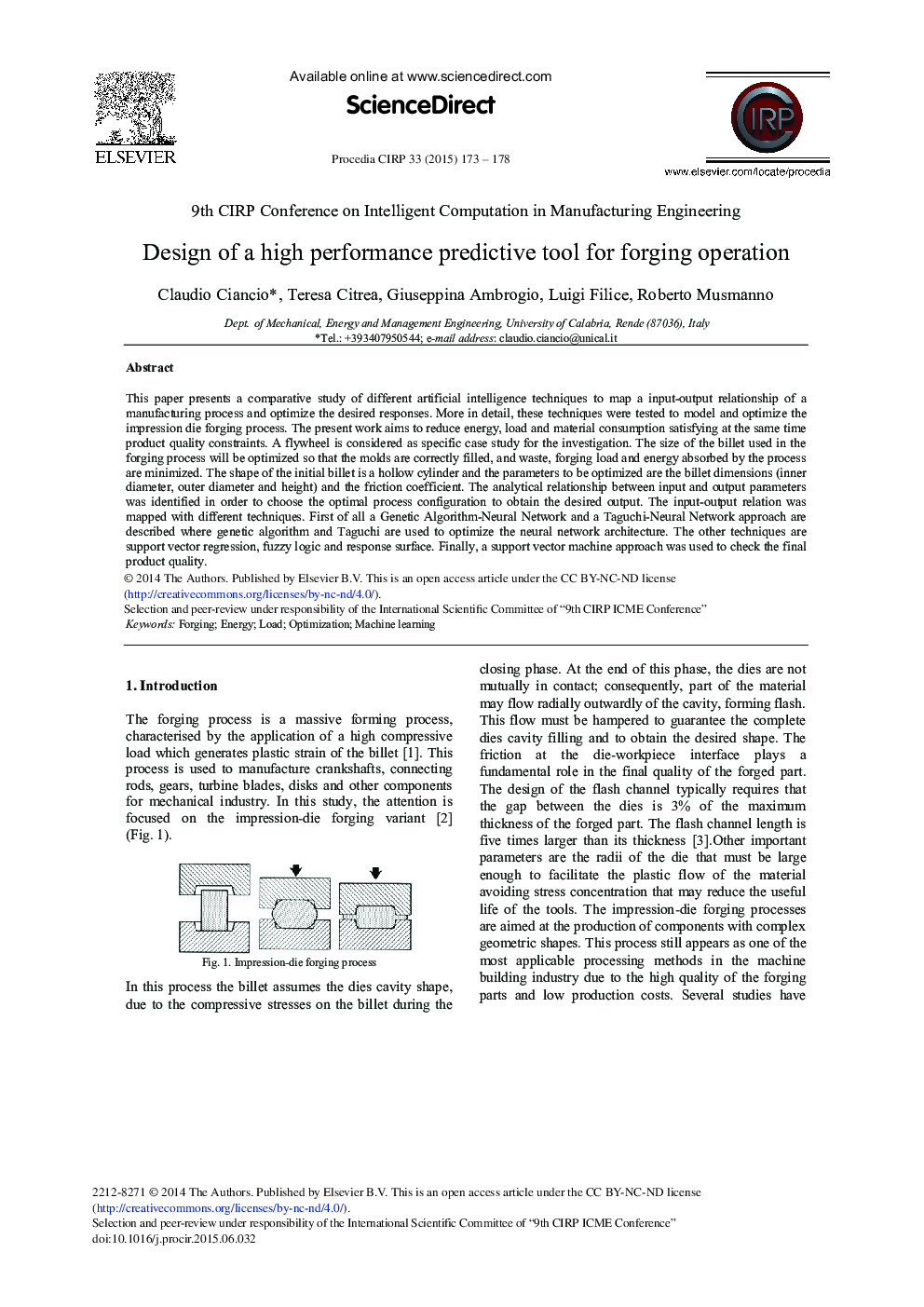| Article ID | Journal | Published Year | Pages | File Type |
|---|---|---|---|---|
| 1699311 | Procedia CIRP | 2015 | 6 Pages |
This paper presents a comparative study of different artificial intelligence techniques to model and optimize a particular manufacturing process known as forging. The present work aims to reduce energy, load and material consumption satisfying at the same time constraints on product quality. A flywheel is considered as specific case study for the investigation. The size of the billet used in the forging process will be optimized so that the molds are correctly filled, and waste, forging load and energy absorbed by the process are minimized. More in particular, the shape of the initial billet is a hollow cylinder and the parameters to be optimized are the billet dimensions (inner diameter, outer diameter and height) and the friction coefficient. The analytical relationship between input and output values will be identified in order to choose the optimal process configuration to obtain the desired output. The input-output relation was mapped with different techniques. First of all a Genetic Algorithm-Neural Network and a Taguchi-Neural Network approach are described where genetic algorithm and Taguchi are used to optimize the neural network architecture. The other techniques are support vector regression, fuzzy logic and response surface. In addition a support vector machine approach was used to check the final product quality.
